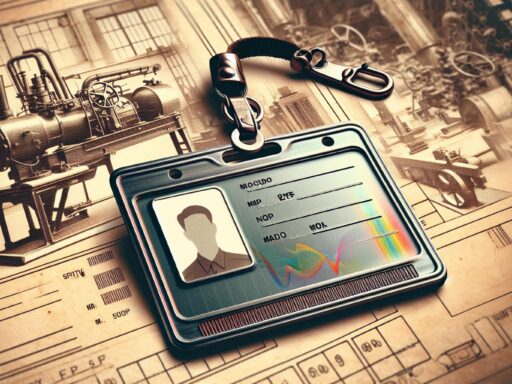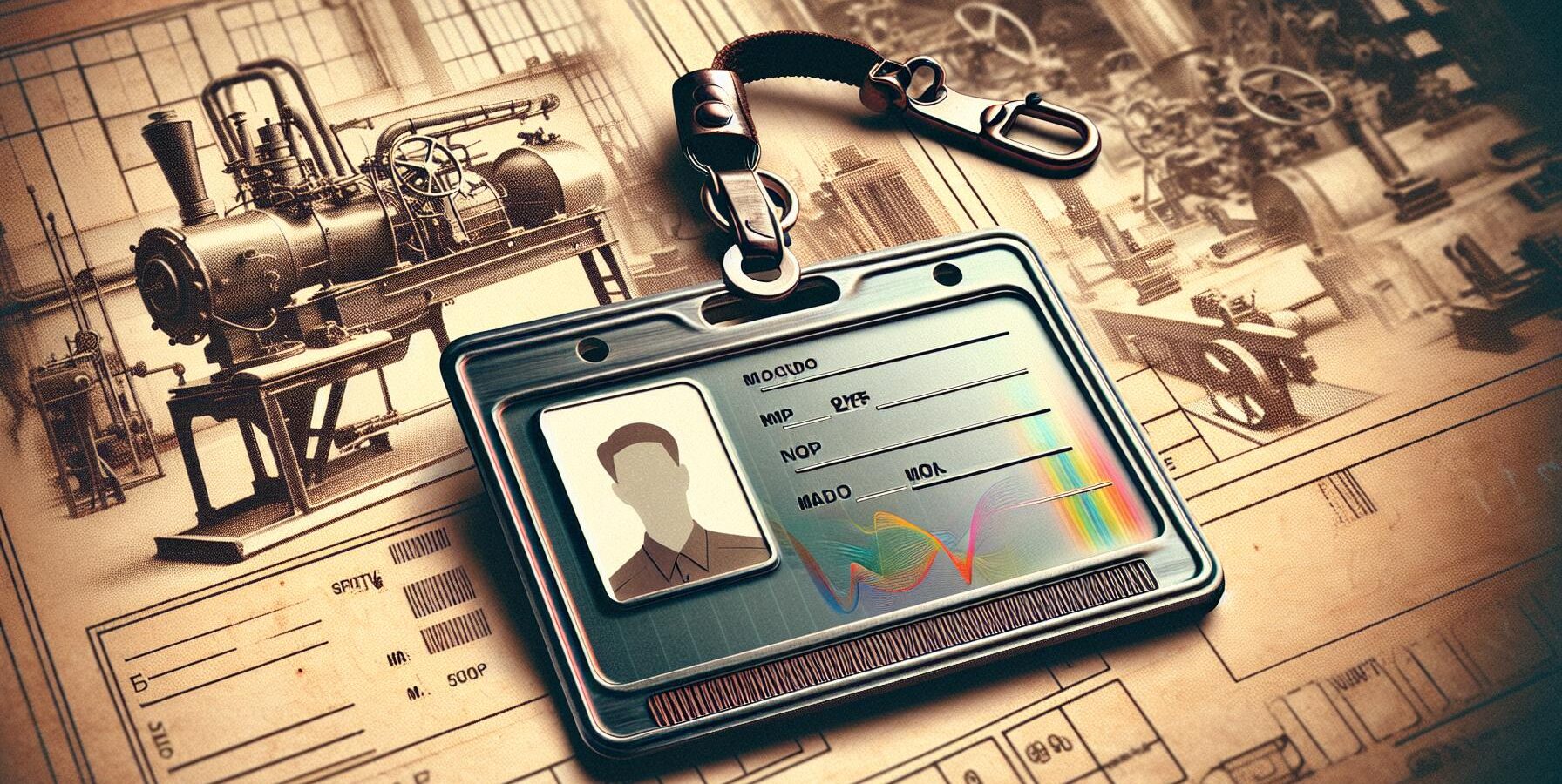Ever wondered why those tiny holes adorn your ID card? They’re more than just a design quirk; they serve practical purposes that enhance functionality and security. Small holes in ID cards make them easier to attach to lanyards, keychains, and retractable badge holders, ensuring they’re always within reach and reducing the risk of loss.
But convenience isn’t the only benefit. These holes can also play a crucial role in security. By integrating small holes, organizations can implement tamper-evident features, making it harder for counterfeiters to replicate the card. This subtle yet effective measure helps protect sensitive information and maintains the integrity of secure environments.
Overview Of ID Card Production
Producing ID cards involves numerous steps designed to ensure durability, security, and functionality. Materials, design elements, and manufacturing techniques all play vital roles in the process.
Materials Used
ID cards typically use materials like PVC, PET, and Composite. PVC provides flexibility and durability. PET ensures thermal stability, and Composite combines benefits of both PVC and PET.
Design Elements
ID cards incorporate multiple design features, such as printed photos, names, and security elements. Holograms, microtext, and UV features also enhance security.
Manufacturing Techniques
Precision techniques like offset printing and dye-sublimation are employed to print ID cards. These methods allow high-quality, detailed images and text.
Lamination
Lamination adds a protective layer to ID cards. This enhances durability and prevents wear and tear, ensuring the card lasts longer.
Creating Small Holes
Small holes are added to enable attachment to lanyards or badge holders. These holes make it practical to carry ID cards and help prevent loss.
Quality Control
Quality checks ensure that ID cards meet the required standards. Inspections identify defects, maintaining the integrity of each card produced.
Why Small Holes Are Made In The ID Card
Small holes in ID cards serve multiple practical purposes. They enhance the card’s functionality in several ways, improving durability, attachment, and security.
Enhancing Durability And Longevity
Small holes contribute to durability and longevity by allowing for easier handling without directly stressing the card’s edges and corners. This reduces the risk of damage or wear over time, ensuring that the card can be used frequently without degradation. Additionally, reinforced edges around these holes can minimize tearing, further enhancing durability.
Facilitating Attachment And Display
Small holes facilitate attachment and display by providing a simple way to connect ID cards to lanyards, keychains, and badge holders. This ensures that users can keep their ID cards visible and easily accessible. Attachments made through these holes help prevent loss since the cards are securely fastened to the user or their belongings.
Improving Security Features
Small holes improve security features by enabling the integration of tamper-evident elements. For example, the placement of security seals or holograms around the hole area can make it more difficult for counterfeiters to replicate the card. This added layer of security helps protect sensitive information and maintain secure environments. By incorporating these features, organizations can ensure that their ID cards are both functional and secure.
Common Methods For Creating Small Holes
There are various methods to create small holes in ID cards, each offering different levels of precision and efficiency.
Manual Punching Techniques
Manual techniques use handheld punches to create holes. These punches feature metal dies that remove small sections of the card material when pressed. The operator positions the ID card in the correct spot, ensuring accuracy for attachment purposes. These tools are relatively inexpensive and are suitable for low-volume use.
Automated Hole-Punching Machines
Automated machines deliver high precision and consistency. These devices are often integrated into ID card production lines, allowing for continuous processing. They use computer-controlled mechanisms to ensure that holes are uniformly placed. Automated systems handle large volumes efficiently and maintain consistent quality without manual intervention.
Impact On Card Design And Usability
Small holes significantly influence both design and practicality. They enhance the visual appeal and functional aspects of ID cards.
Visual Aesthetics
Small holes, when strategically placed, can complement the overall card design. Designers often incorporate these holes into the layout to maintain an appealing look while ensuring functionality isn’t compromised. By aligning the holes with the card’s visual elements, the aesthetic integrity remains intact. Additionally, custom shapes or reinforced edges around the holes can add a unique touch, making the card appear professional and cohesive.
Practical Functionalities
From a usability perspective, small holes are crucial. They facilitate easy attachment to lanyards, badge reels, or keychains, ensuring cards are always accessible and reducing misplacement risk. The placement of the holes helps evenly distribute stress, preventing card damage during daily use. This design consideration extends the card’s life and maintains its usability. For tamper-evident features, integrating security elements around holes increases protection against unauthorized alterations, making the card both secure and durable.
Industry Standards And Best Practices
Industry standards and best practices ensure the consistent quality, durability, and security of ID cards.
Regulatory Guidelines
Regulatory guidelines define the specifications and tolerances for small holes in ID cards. ISO/IEC 7810 outlines the dimensions and properties of identification cards, ensuring their compatibility with global systems. Compliance with these standards guarantees that ID cards fit within automated systems without manual adjustments. Guidelines also specify minimum hole diameter and placement, ensuring functionality and structural integrity.
Recommended Materials And Tools
Recommended materials for creating small holes in ID cards include high-quality punches and automated punching machines. Manual punches, ideal for low-volume production, provide flexibility and control. However, automated punching machines ensure precision and consistency, crucial for large-scale production. Both manual and automated tools must align with material properties, such as PVC and PET, to prevent damage and maintain card durability. High-quality tools minimize wear, extending their lifespan and ensuring each hole meets industry specifications.
Discover the Power of BlueNotary:
Integrate your Business, Title Company, or Law Firm to Satisfy your Customers and Decrease Turnaround
Get a document Notarized/Sign-up
Join the Free Notary Training Facebook Group
Conclusion
Small holes in ID cards play a crucial role in enhancing their convenience, security, and durability. By facilitating easy attachment to lanyards and badge holders, they help prevent loss and ensure cards remain accessible. The integration of security features around these holes further protects against tampering and counterfeiting.
The production process, involving high-quality materials and advanced techniques, ensures that each ID card meets stringent standards for durability and functionality. Whether through manual or automated methods, creating these holes with precision is essential for maintaining the card’s integrity and usability.
Adhering to industry standards and best practices guarantees that ID cards are reliable and secure. By understanding the multifaceted benefits of small holes, organizations can optimize their ID card systems, enhancing both practicality and protection.
Frequently Asked Questions
What is the purpose of the small holes in ID cards?
The small holes in ID cards enhance convenience by allowing the cards to be easily attached to lanyards, keychains, and badge holders, reducing the risk of loss. They also support the integration of tamper-evident security features.
How do small holes improve the security of ID cards?
Small holes can incorporate tamper-evident features that make it difficult for counterfeiters to replicate the cards, thereby enhancing the security of sensitive information and secure environments.
What are the common materials used in ID card production?
ID cards are typically made from materials like PVC, PET, and Composite. These materials offer unique benefits in terms of durability, flexibility, and print quality.
What are the main steps involved in producing an ID card?
The production of ID cards involves several steps, including design, printing (using techniques like offset printing and dye-sublimation), and lamination for durability. Quality control measures ensure the cards meet required standards.
How do small holes contribute to the durability of ID cards?
Small holes facilitate easier handling and minimize wear on the edges and corners of ID cards. They allow for secure attachment to accessories, ensuring that cards remain accessible and reducing the risk of them getting lost or damaged.
What are the methods for creating small holes in ID cards?
Small holes in ID cards can be created using manual punching techniques for low-volume production or automated hole-punching machines for high precision and consistency in large-scale production.
How do small holes impact the design and usability of ID cards?
Strategically placing small holes can enhance the visual aesthetics and functionality of ID cards. They allow for easy attachment to various accessories and ensure that stress is evenly distributed to prevent damage during daily use.
What industry standards apply to the small holes in ID cards?
Industry standards like ISO/IEC 7810 define specifications for small holes in ID cards, ensuring compatibility with global systems. Compliance with these standards guarantees that ID cards function properly in automated systems.
What tools are recommended for creating small holes in ID cards?
For low-volume production, appropriate manual punches are recommended, while automated punching machines are suited for precision in large-scale production. The tools should be compatible with materials like PVC and PET to prevent damage.








